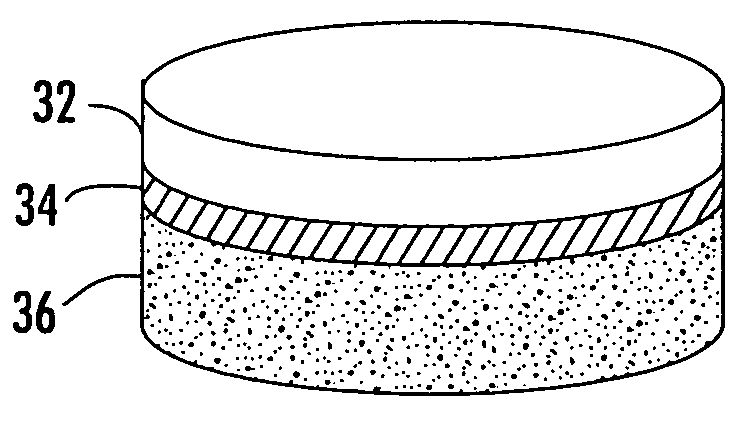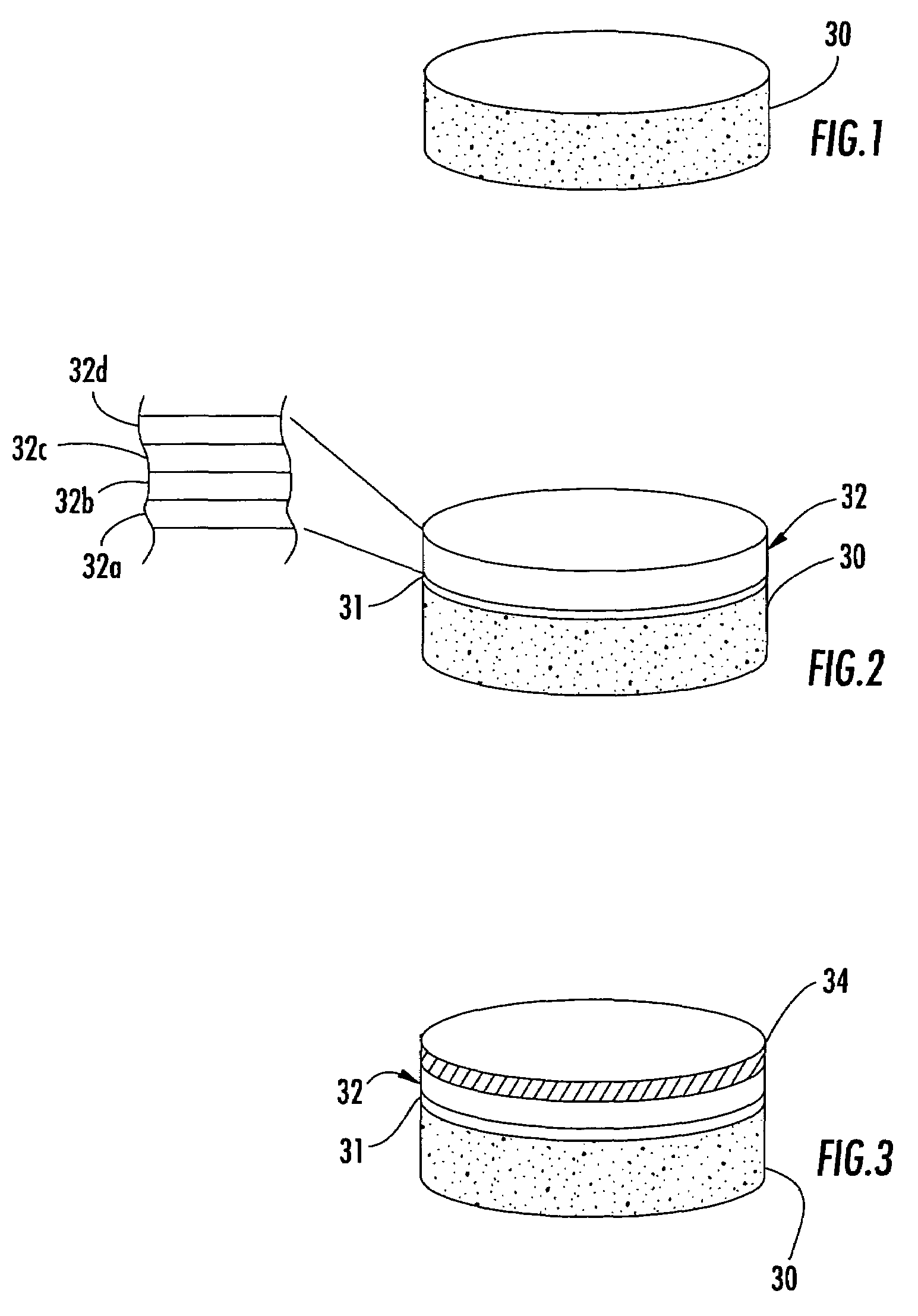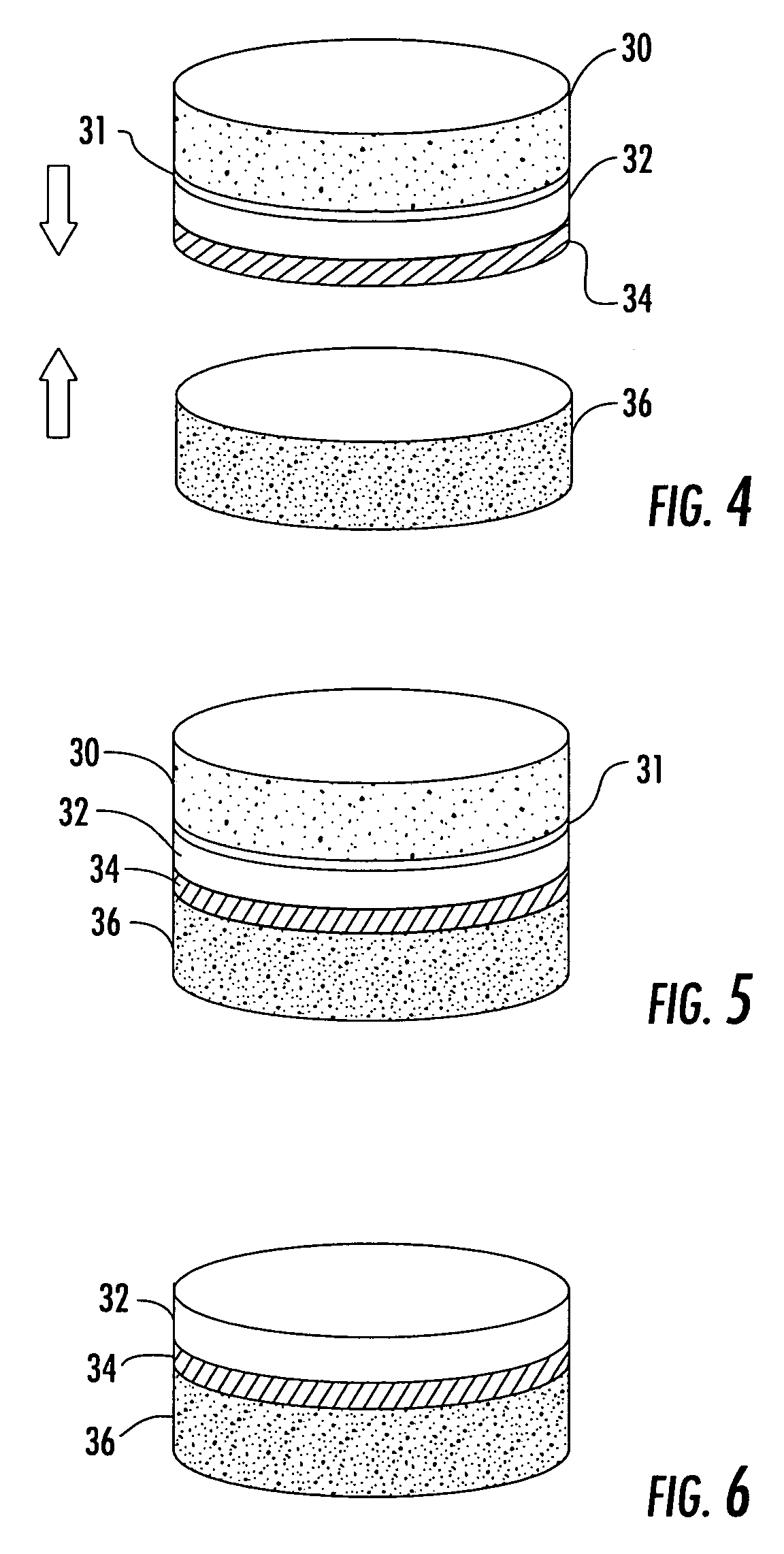Method for making Group III nitride devices and devices produced thereby
a technology of nitride and group iii, applied in the field of semiconductors, can solve the problems of high defect density of gan film on sapphire, costing more to grow thicker films, and inability to meet the requirements of the application, and achieves the effect of easy removal of heat and thin active areas
- Summary
- Abstract
- Description
- Claims
- Application Information
AI Technical Summary
Benefits of technology
Problems solved by technology
Method used
Image
Examples
example 1
[0110]The LAO wafer is cleaned and placed in the Aixtron 200 HT MOCVD reactor. The growth process follows the standard GaN growth procedure on sapphire. The substrate was first preheated to 1050° C. for 10 minutes under a nitrogen atmosphere. The temperature is lowered down to 580° C. and an AlN low temperature buffer layer of 50 nm in thickness is grown on the LAO wafer. Afterward, the temperature is raised to 950° C. and 800 nm of undoped GaN is grown on top of the AlN buffer layer. The reflectometry result is shown in FIG. 15. The film is smooth in appearance and there is no peel-off.
[0111]However, TEM (transmission electron microscopy) shows quite a different result. The AlN layer is poorly crystallized and it provides the nuclei for the growth of GaN film on top of it. Since the preferred orientation of the AlN nuclei is along the c-axis [0001] direction, as a result, the GaN film is c-plane (0001) film and not the m-plane (1010) film. So there is no epitaxial relationship of t...
example 2
[0112]A new LAO wafer is cleaned and placed in the Aixtron 200 HT MOCVD reactor. We change the growth procedure following our recipe. First, we eliminate the step of 10 minutes of preheating of the substrate to 1050° C. Instead, we heat the wafer directly to 900° C. and then start the deposition of AlN film at this high temperature. After the growth of a 50 nm high temperature AlN buffer layer, we raise the temperature to 950° C. and 800 nm of n-doped GaN:Si layer is grown on top of the AlN layer. The reflectometry data (FIG. 16) which monitors the smoothness of the film during growth shows great improvement of the film quality and is distinctively different from that of Example 1.
[0113]The film is specular and there is no peel-off after cooling down to room temperature. The Si doping has no effect on the quality of the film. When looked under microscope, the GaN film is very uniform and there is no crack found in the film. This is consistent with the fact that GaN has smaller therm...
example 3
[0115]Once the basic growth process of n-doped GaN:Si epitaxial film is established, we proceed with the growth of GaN film with the full p-n junction and quantum well structure. A new LAO wafer is cleaned and placed in the Aixtron 200 HT MOCVD reactor. We use the growth procedure established in Example 2 for the growth of full structure GaN film. The wafer is heated directly to 900° C. and then starts the deposition of 50 nm thick AlN high temperature buffer layer. After the growth AlN buffer layer, the temperature is raised to 950° C. to grow 800 nm thick of n-doped GaN:Si layer. After that, we grow the quantum well structure which consists of two pairs of 10 nm undoped GaN barrier and 5 nm InGaN well. On top of it, we grow a 10 nm AlGaN barrier layer before the growth of the final 200 nm p-doped GaN:Mg cap layer.
[0116]The reflectometry data (FIG. 17) shows excellent growth conditions. After the completion of the growth of p-n junction plus multiple quantum well structure, the fur...
PUM
| Property | Measurement | Unit |
|---|---|---|
| thickness | aaaaa | aaaaa |
| temperature | aaaaa | aaaaa |
| thickness | aaaaa | aaaaa |
Abstract
Description
Claims
Application Information
 Login to View More
Login to View More - R&D
- Intellectual Property
- Life Sciences
- Materials
- Tech Scout
- Unparalleled Data Quality
- Higher Quality Content
- 60% Fewer Hallucinations
Browse by: Latest US Patents, China's latest patents, Technical Efficacy Thesaurus, Application Domain, Technology Topic, Popular Technical Reports.
© 2025 PatSnap. All rights reserved.Legal|Privacy policy|Modern Slavery Act Transparency Statement|Sitemap|About US| Contact US: help@patsnap.com



